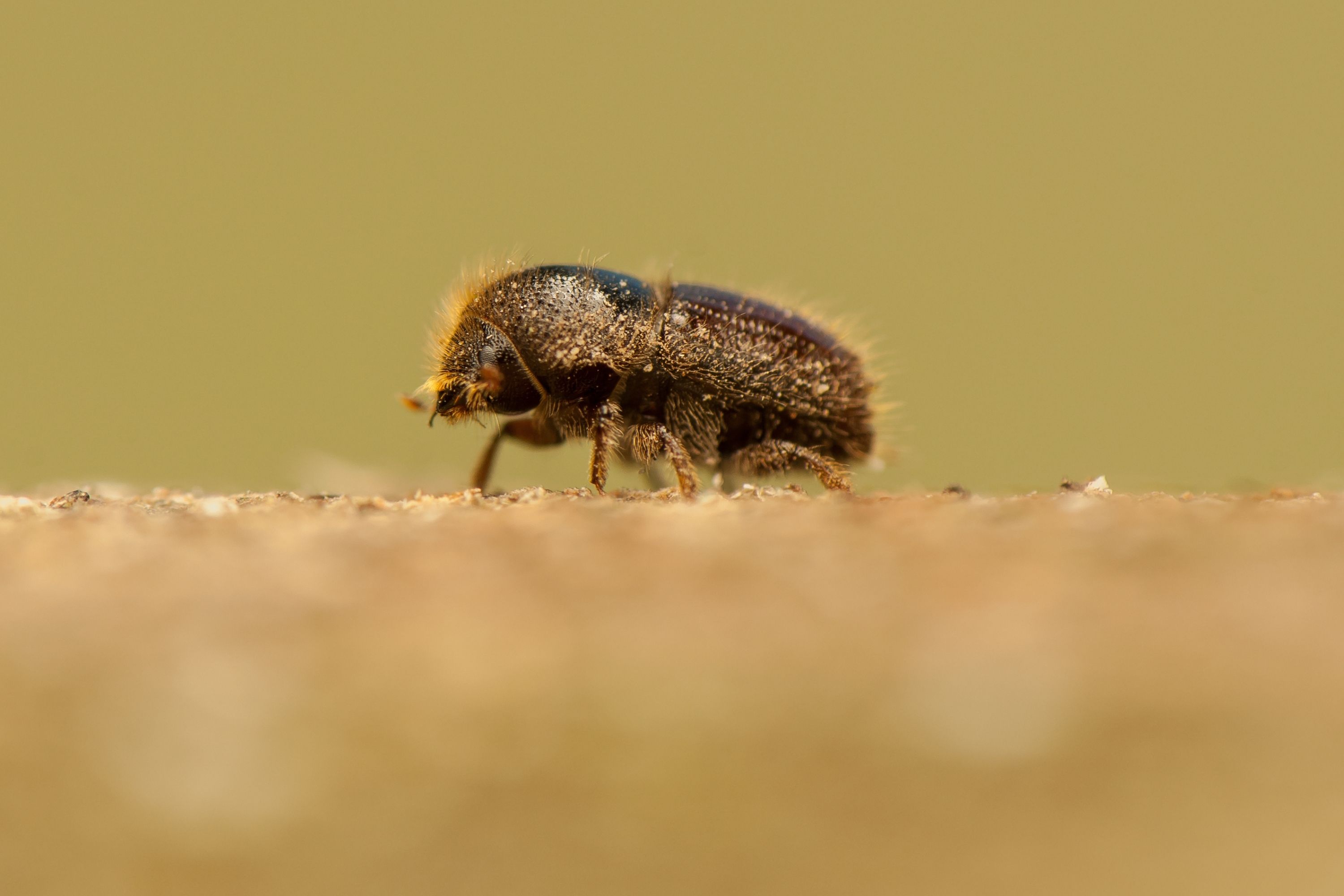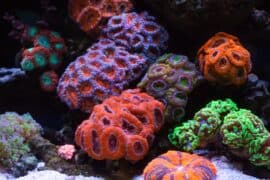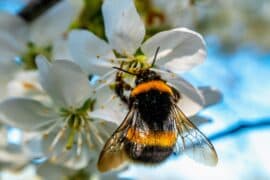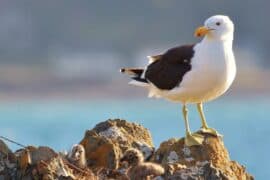European spruce bark beetle
(Ips typographus)

Description
The European spruce bark beetle (Ips typographus), is a species of beetle in the weevil subfamily Scolytinae, the bark beetles, and is found from Europe to Asia Minor and some parts of Africa. Adults are usually 4.0-5.5 millimetres (0.16-0.22 in) long, cylindrical and robust, black or brownish-black. Elytral declivity is slightly shiny, with 4 teeth on each margin side. The third tooth is the biggest and club like on its top. The egg is yellowish-white. The larva is white and legless. The pupa is also white. Bark beetles are so named because they reproduce in the inner bark, living and dead phloem tissues, of trees. Adult beetles hibernate in forest litter and host trees when environmental conditions are not favorable for reproduction. When conditions are right, they travel up to half a mile in search of a vulnerable host. Once the host is located, the adult burrows through the weakened bark in order to build tunnels where they can mate and lay eggs. They release pheromones to attract more individuals to the host tree. Two to five weeks after contamination, they may migrate to another host and repeat the process. Once the larvae hatch, they feed and pupate under the bark. Up to three generations are produced per year. Bark beetles communicate with one another using semiochemicals, compounds or mixtures that carry messages. Some electrophysiological and behavioral statistics show that bark beetles can not only sense olfactory signals directly from other bark beetles, but also some compounds from trees. It is also possible that beetles are attracted to the pheromone ipslure. They are also thought to be attracted to ethanol, one of the byproducts of microbial growth in dead woody tissues. Bark beetles can form a symbiotic relationship with certain Ophiostomatales fungi. These phloem-feeding bark beetles use phloem-infesting fungi as an addition to their diet. European bark beetles have the ability to spread quickly over large areas. Some scientists hypothesize that long-distance movements originating from the Iberian Peninsula may have contributed to their invasion of northern Norway spruce forests. Movements like this can happen when various environmental factors such as severe storms, drought, or mass fungal infections damage or kill host trees. Trees in the genera Picea (spruce), Abies (fir), Pinus (pine), and Larix (larch) are the bark beetles' trees of choice.
Taxonomic tree:







